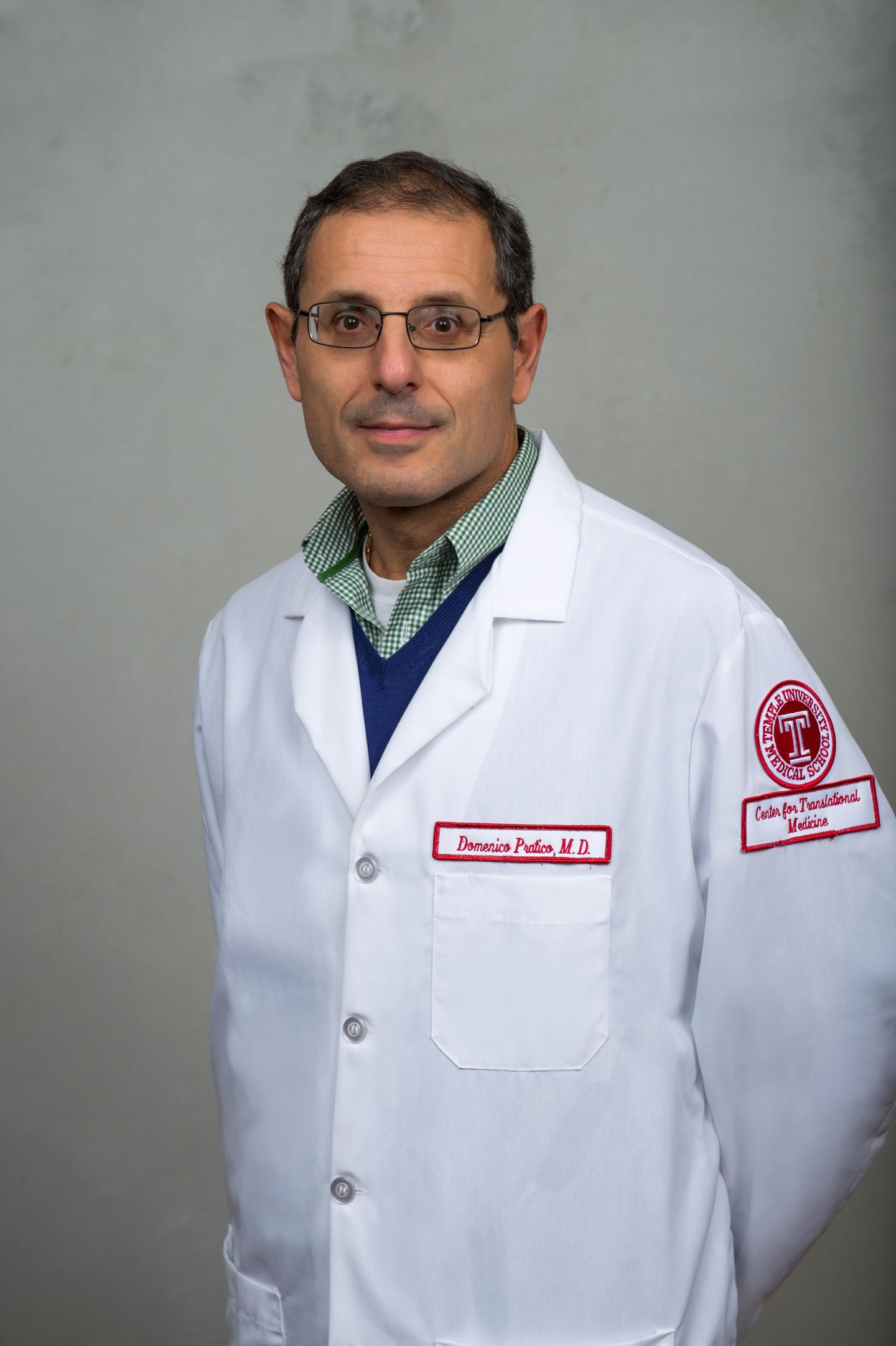
Credit: Lewis Katz School of Medicine at Temple University
(Philadelphia, PA) – Like a sorting machine in an assembly line, a molecule known as VPS35 detects and removes defective proteins from neurons. And similar to other quality control processes, the VPS35 system goes a long way toward protecting health, according to new work by researchers at the Lewis Katz School of Medicine at Temple University. They show for the first time that VPS35 clears the brain of a potentially harmful protein called tau, which otherwise accumulates and contributes to neurodegenerative disorders, including Alzheimer’s disease.
The new findings were published online July 9 in the journal Molecular Psychiatry.
“A major part of what VPS35 does is to sort out and transport dysfunctional proteins to degradation sites,” explained senior investigator Domenico Praticò, MD, Scott Richards North Star Foundation Chair for Alzheimer’s Research, Professor in the Departments of Pharmacology and Microbiology, and Director of the Alzheimer’s Center at Temple at the Lewis Katz School of Medicine (LKSOM).
The buildup of defective proteins in neurons is a feature shared by Alzheimer’s disease, Parkinson’s disease, and several other neurodegenerative conditions. Tau is one of the major proteins to amass in the brain and cause damage in these diseases, creating a condition described as tauopathy.
Previous work by other researchers had shown that the function of VPS35 is altered in Alzheimer’s disease and that VPS35 activity is reduced in the brains of Alzheimer’s patients. The relationship between VPS35 activity and tau accumulation was largely unexplored.
“We asked specifically whether the VPS35 system is important for clearing defective tau proteins,” Dr. Praticò said. To answer this question, his team of researchers examined brain tissue from patients with either progressive supra-nuclear palsy (PSP) or Picks’ disease. Unlike Alzheimer’s disease, in which tau accumulation is secondary to that of beta-amyloid, in PSP and Picks’ disease tau is the only protein to form deposits in the brain.
Analyses revealed that the brains of PSP and Pick’s disease patients had VPS35 levels that were 50 percent lower than those of control subjects. When the researchers deliberately altered VPS35 levels in individual tauopathy-affected neurons in vitro, they discovered that they could directly control tau accumulation, for the first time implicating VPS35 in tauopathy. The VPS35-dependent effect on tau was mediated by the activity of cathepsin D, an enzyme that specializes in protein degradation.
Dr. Praticò’s team also carried out experiments in mice with tau accumulation. VPS35 downregulation in these animals exacerbated memory and learning impairment and was associated with worsened motor function. Moreover, VPS35 reduction resulted in a loss of synaptic integrity between neurons in the animals’ brains, significantly damaging neural communication.
“When tau lingers in cells, it is very bad for synapses, the places where neurons meet and exchange signals,” explained Dr. Praticò. “In the animals we studied, there was a 40 to 50 percent loss in synaptic connectivity when VPS35 activity was reduced, which led to the types of cognitive and motor deterioration, including losses in memory and learning ability, seen in human tauopathy patients.”
The discovery of the involvement of cathepsin D shed additional light on the relationship between VPS35 and tau. “Without VPS35, cathepsin D does not degrade tau, leaving tau to build up in the brain,” Dr. Praticò said.
Dr. Praticò’s team plans next to investigate the possibility of using a drug to put VPS35 back to work in the context of neurodegenerative disease. “The approach would be unique. Instead of targeting an enzyme, as other small molecules have been developed to do, we would be targeting an actual mechanism, which should be more viable,” he said.
###
Other researchers contributing to the study include Alana N. Vagnozzi, Jian-Guo Li, Jin Chiu, and Rebecca Warfield in the Alzheimer’s Center at Temple and the Department of Pharmacology at LKSOM; and Roshanak Razmpour and Servio H. Ramirez in the Department of Pathology and Laboratory Medicine at LKSOM.
The research was funded in part by National Institutes of Health grants AG055707 and AG056689.
About Temple Health
Temple University Health System (TUHS) is a $2.1 billion academic health system dedicated to providing access to quality patient care and supporting excellence in medical education and research. The Health System consists of Temple University Hospital (TUH), ranked among the “Best Hospitals” in the region by U.S. News & World Report; TUH-Episcopal Campus; TUH-Northeastern Campus; Fox Chase Cancer Center, an NCI-designated comprehensive cancer center; Jeanes Hospital, a community-based hospital offering medical, surgical and emergency services; Temple Transport Team, a ground and air-ambulance company; and Temple Physicians, Inc., a network of community-based specialty and primary-care physician practices. TUHS is affiliated with the Lewis Katz School of Medicine at Temple University, and Temple University Physicians, which is Temple Health’s physician practice plan comprised of more than 500 full-time and part-time academic physicians in 20 clinical departments.
The Lewis Katz School of Medicine (LKSOM), established in 1901, is one of the nation’s leading medical schools. Each year, the School of Medicine educates more than 800 medical students and approximately 240 graduate students. Based on its level of funding from the National Institutes of Health, the Katz School of Medicine is the second-highest ranked medical school in Philadelphia and the third-highest in the Commonwealth of Pennsylvania. According to U.S. News & World Report, LKSOM is among the top 10 most applied-to medical schools in the nation.
Temple Health refers to the health, education and research activities carried out by the affiliates of Temple University Health System (TUHS) and by the Katz School of Medicine. TUHS neither provides nor controls the provision of health care. All health care is provided by its member organizations or independent health care providers affiliated with TUHS member organizations. Each TUHS member organization is owned and operated pursuant to its governing documents.
Media Contact
Jeremy Walter
[email protected]




